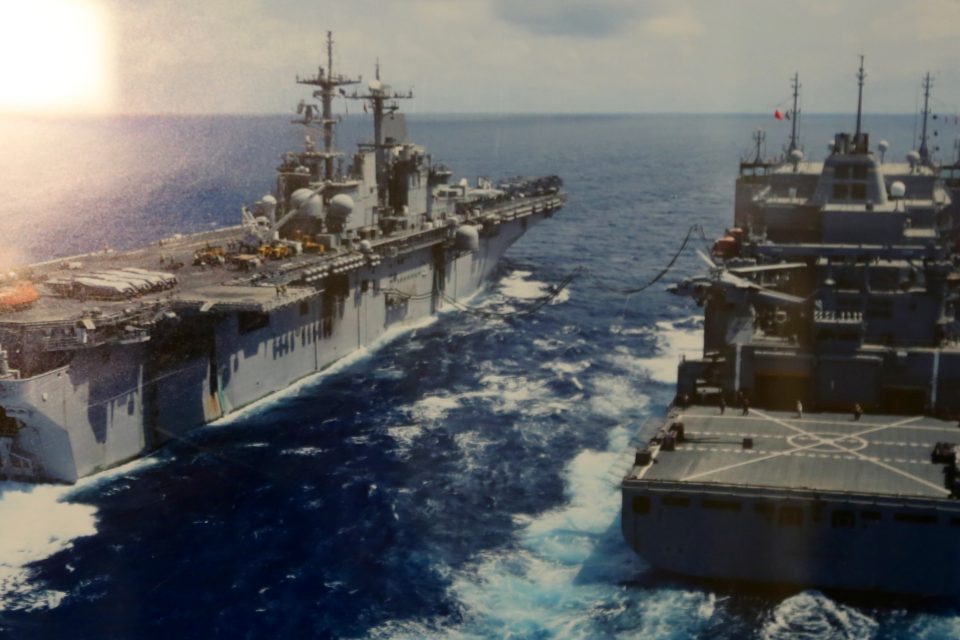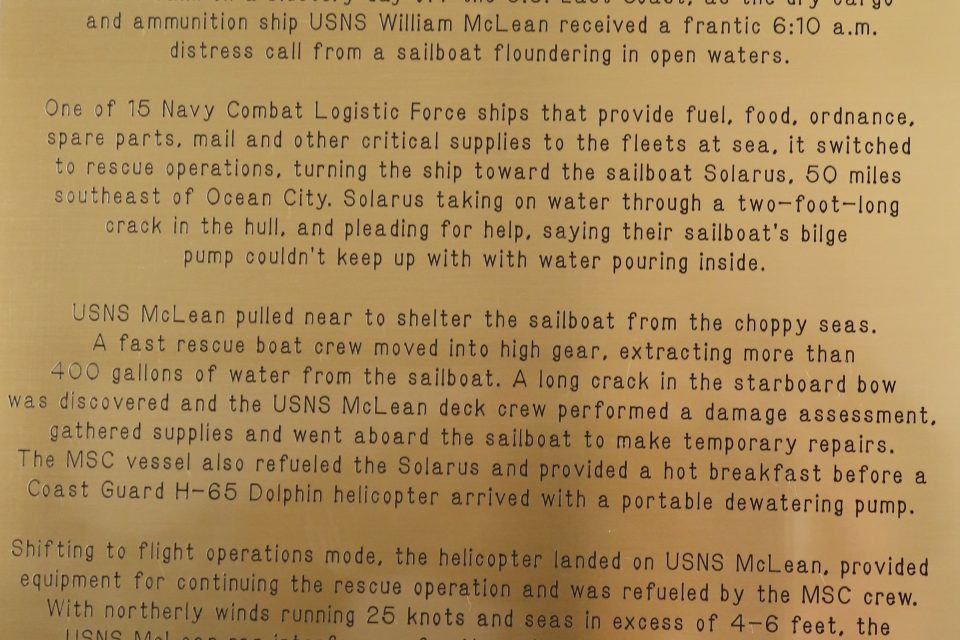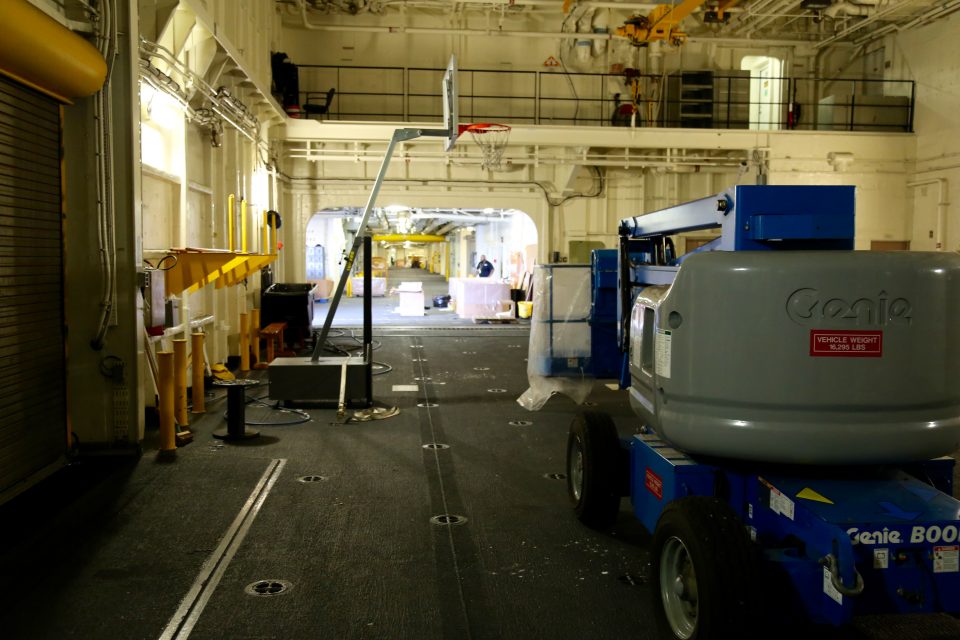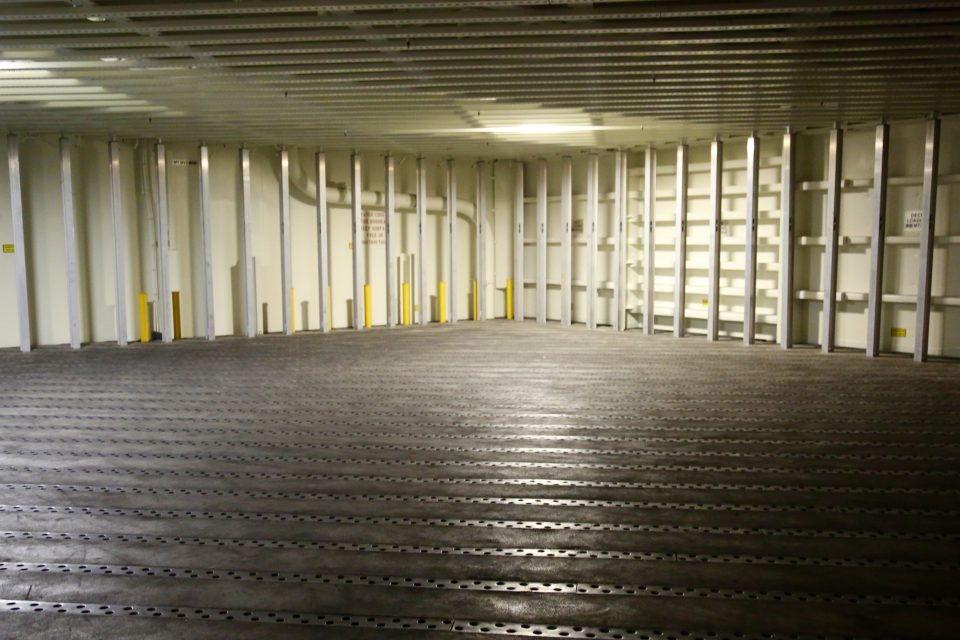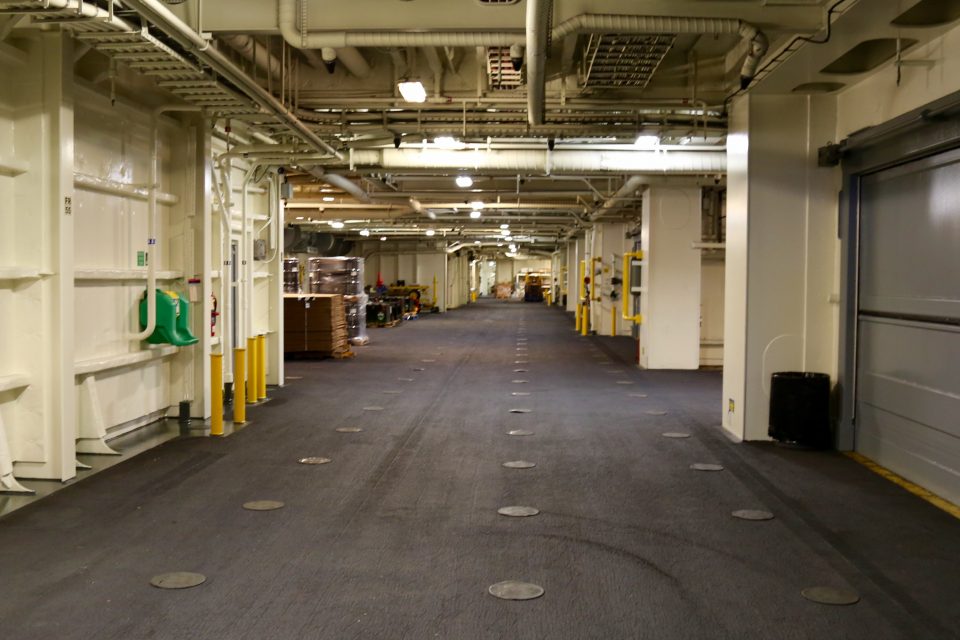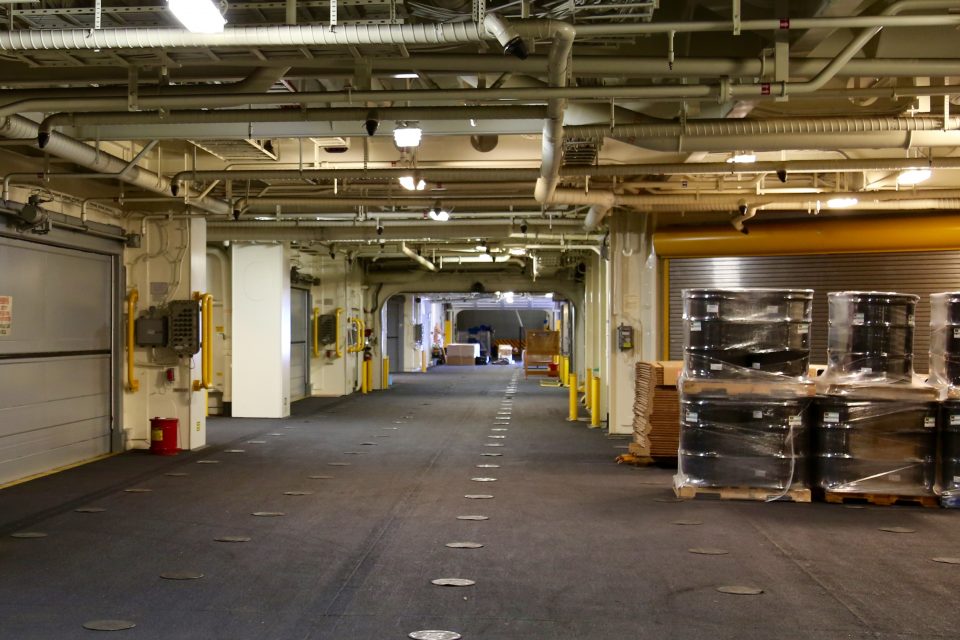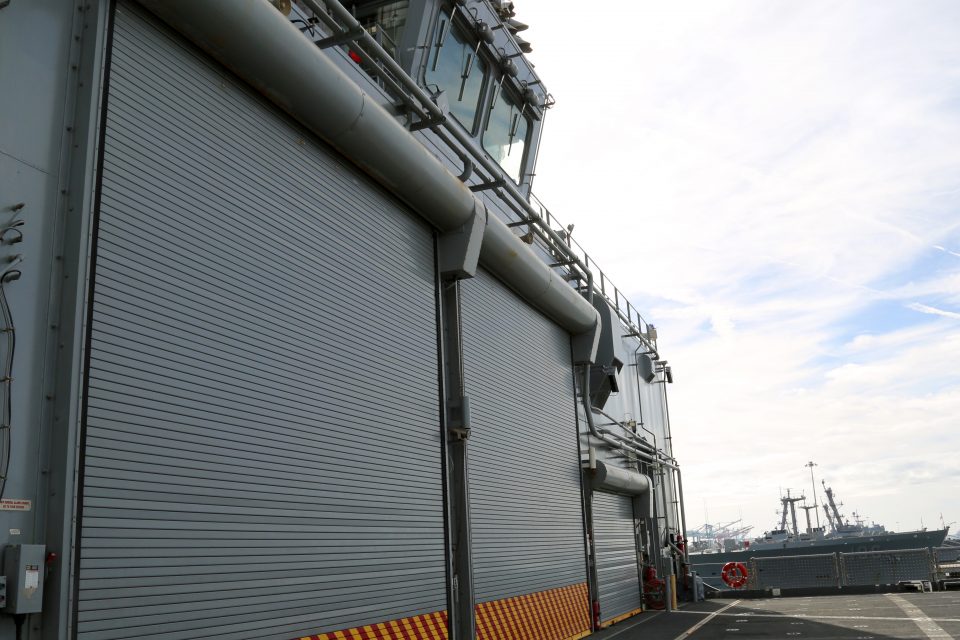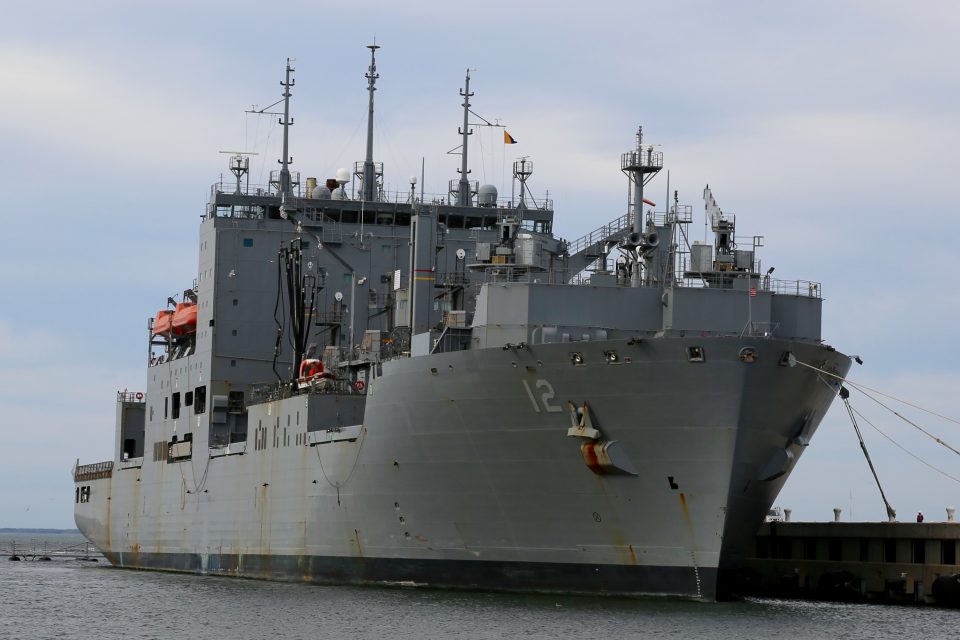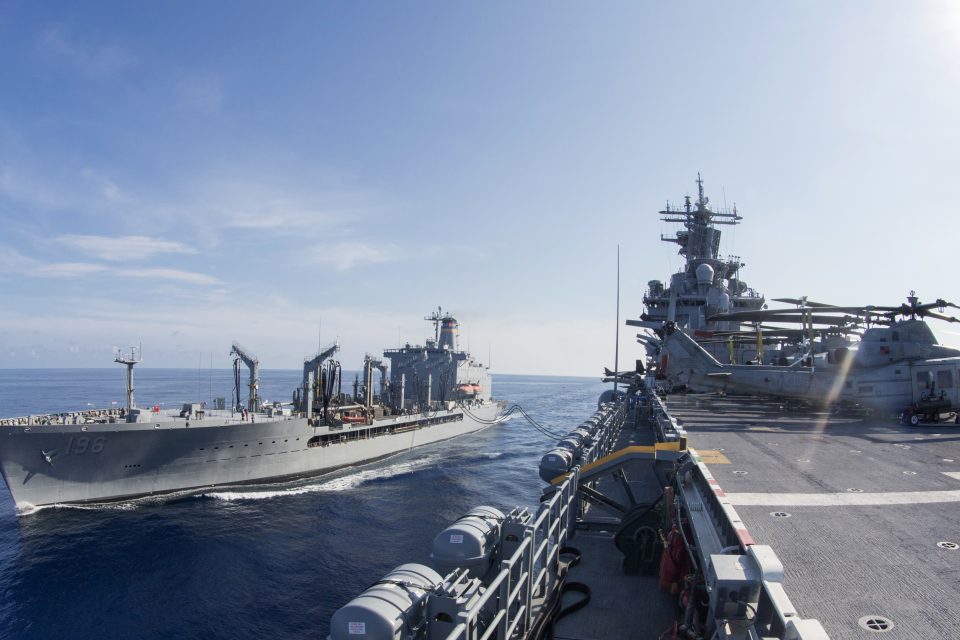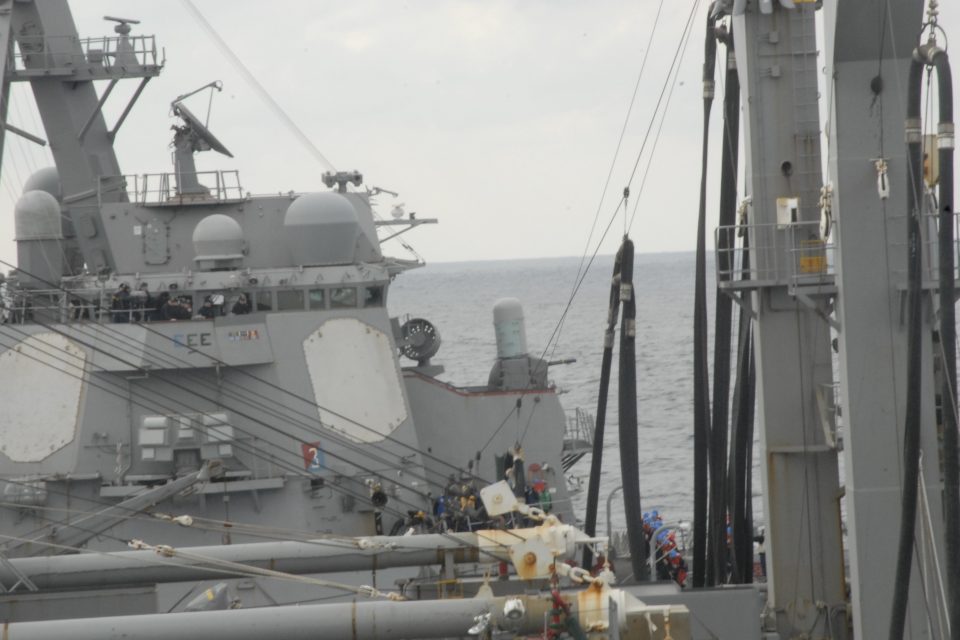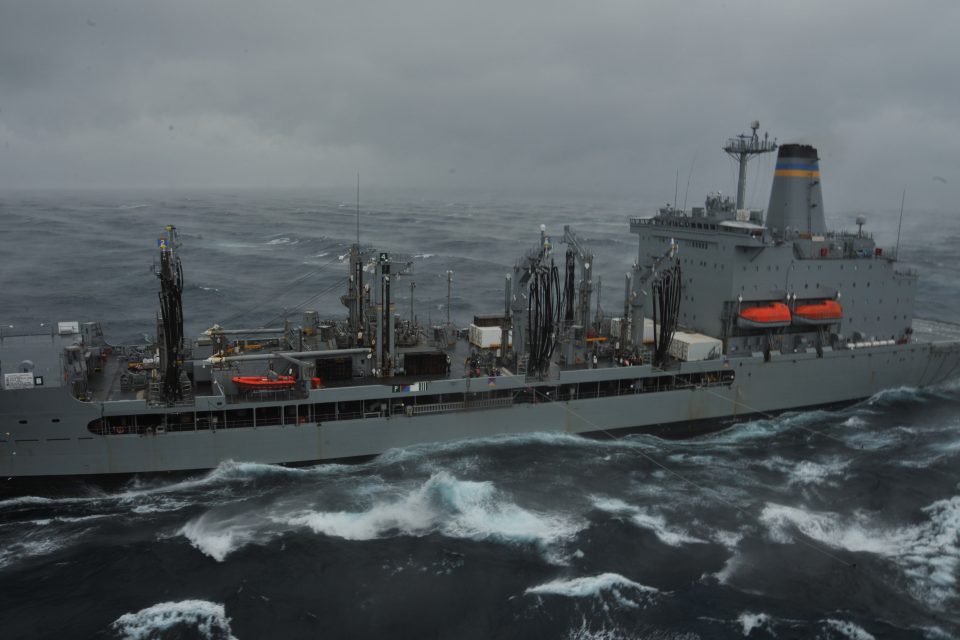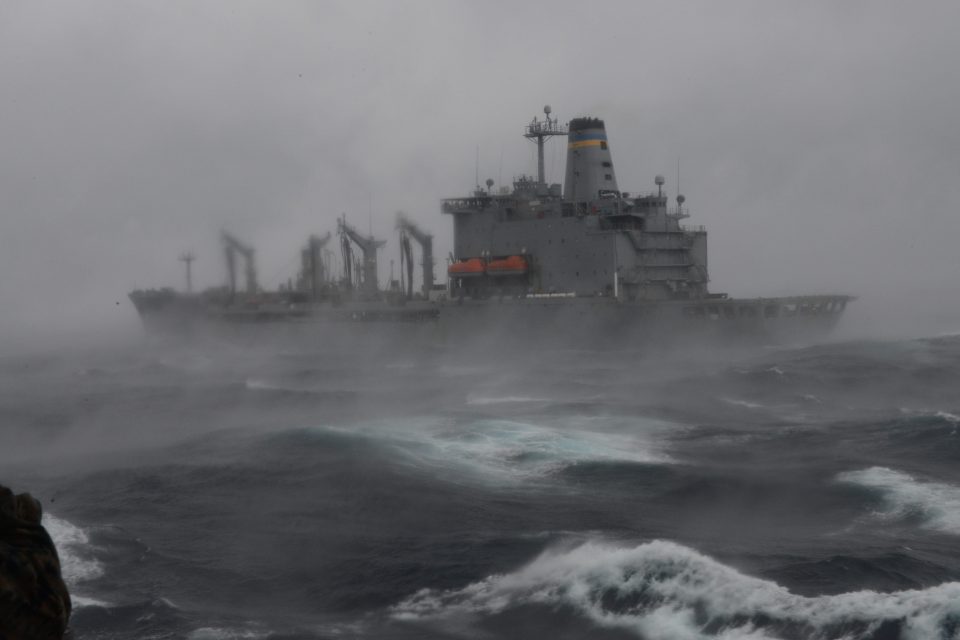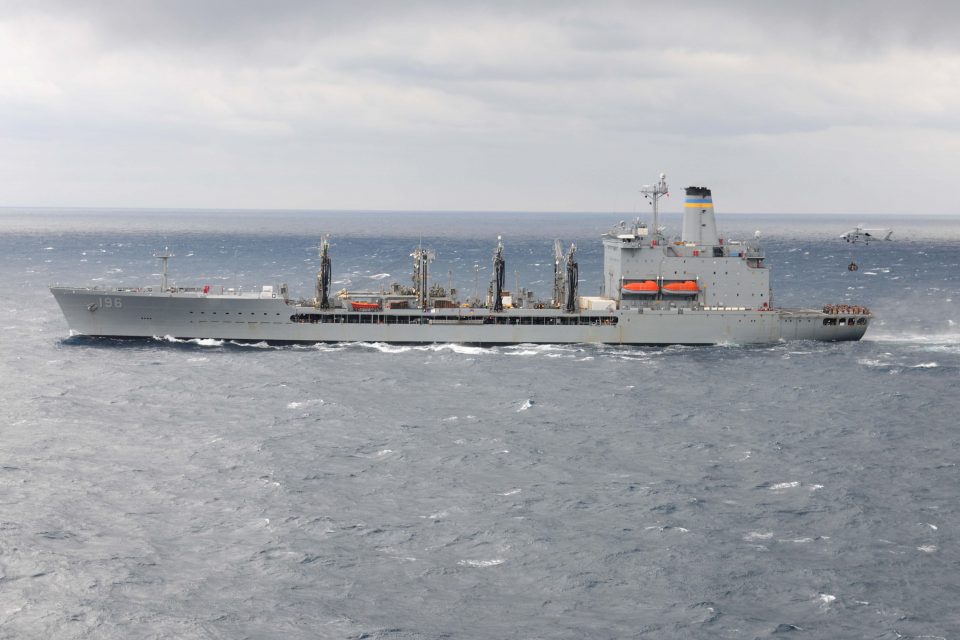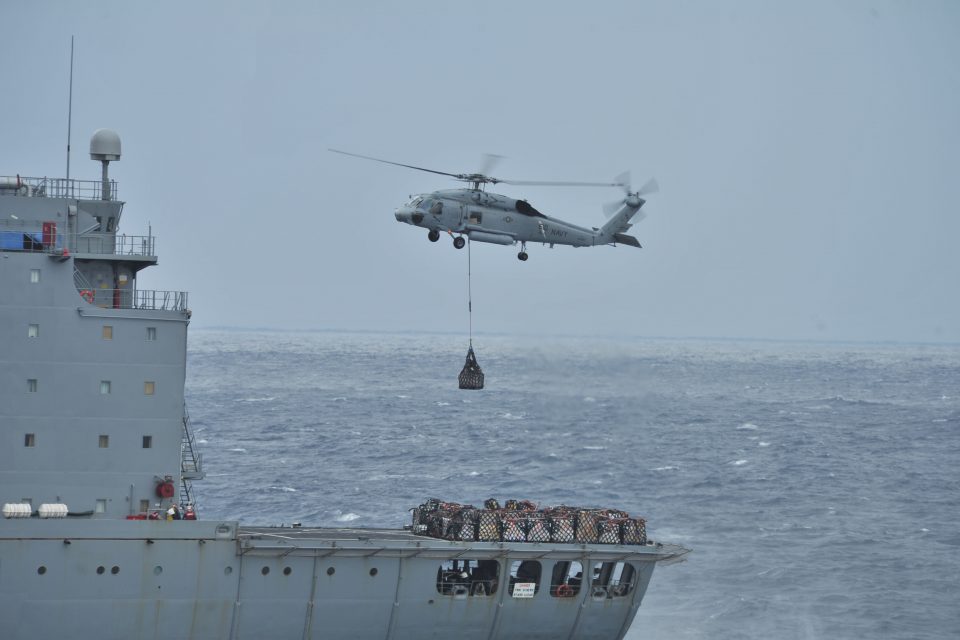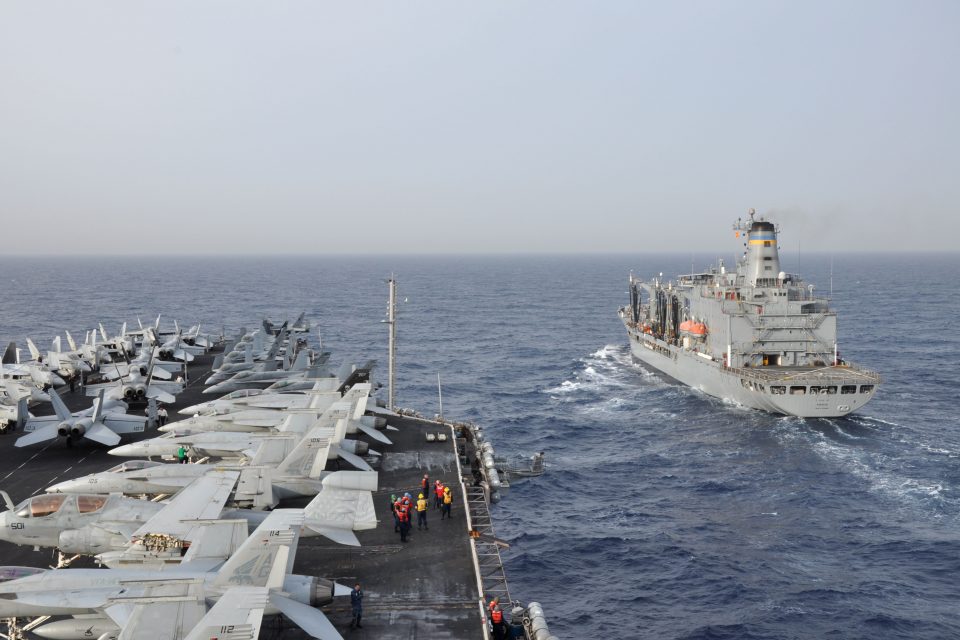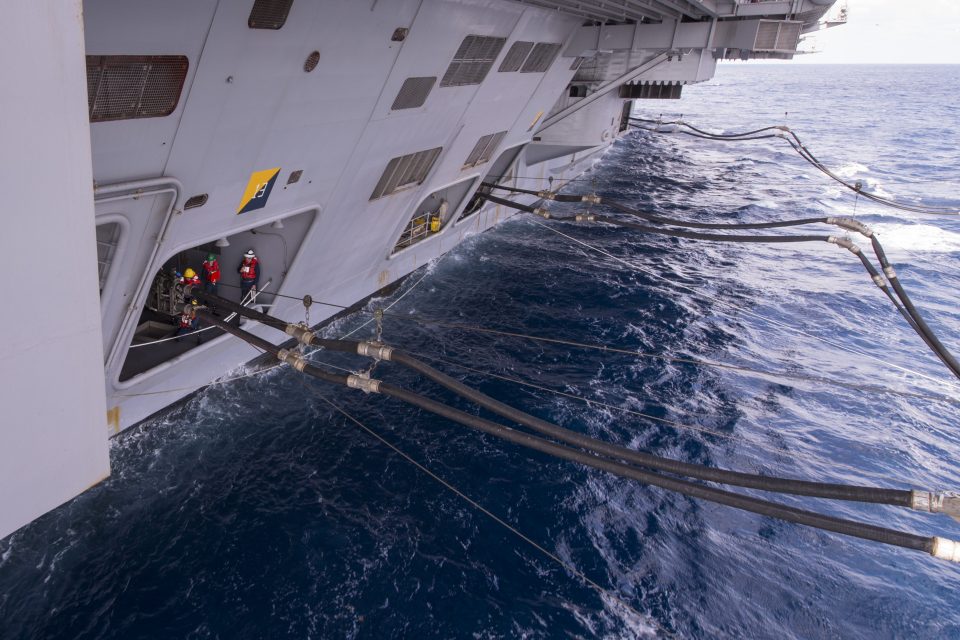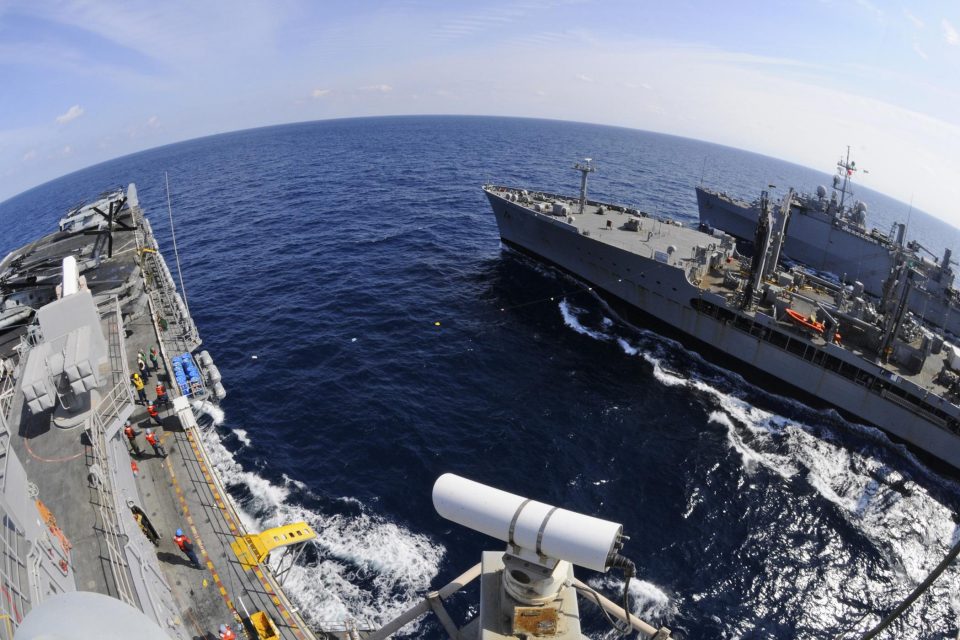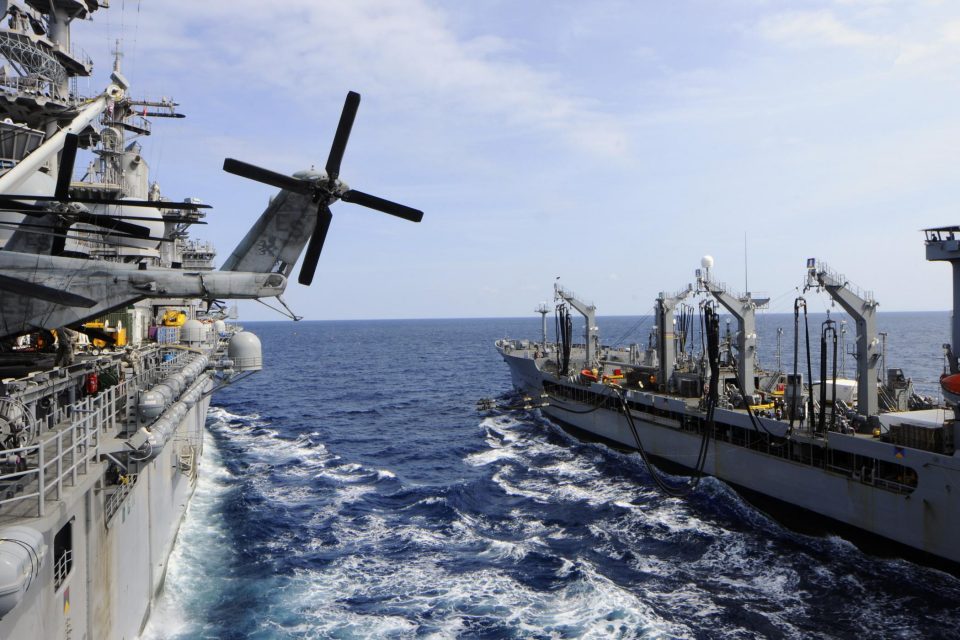2016-04-08 By Robbin Laird
The U.S. Navy and Marine Corps operate from ships supplied at sea by the Military Sealift Command (MSC).
This Command is the crucial logistical lynch pin of the sea services, without which the United States would not have an effective maritime combat force.
But the decline of the U.S. merchant marine and the dwindling pool of mariners is a threat to the viability of supporting the Navy and Marines.
And the problem is getting worse. The demand on Military Sealift Command ships is increasing as the Navy moves towards a new concept of operations whereby their ships are operating farther apart both for global coverage and to assure the security of the fleet against 21st century threats.
A good example of this shift is what the Navy and Marine Corps refer to as the Amphibious Ready Group-Marine Expeditionary force. Historically, this force has operated by means of a “three-ship package” deployed within 200 miles of each other. But with the use of the Osprey, which has significantly greater range and speed than helicopters, these ships are now operating thousands of miles from one another on many deployments. It does not take a genius to understand that resupplying ships that are so far apart increases demand on the logistical merchant fleet.
With the approaching retirement of the current generation of mariners, experience gaps are a growing vulnerability. The significant decline in the size of the U.S.-flag merchant marine fleet engaged in international trade — at less than 80 ships currently — and the decline of trained mariners poses a significant strategic challenge for the United States, one that is rarely, if ever, discussed among policymakers.
The Merchant Sealift Command is receiving new ships, such as 12 Dry Cargo & Ammunition ships (T-AKE); 10 Expeditionary Fast Transports (T-EPF), previously known as the Joint High-Speed Vessels (JHSV); two Expeditionary Transfer Docks (T-ESD); and the Expeditionary Mobile Base (T-ESB).
The U.S. shipbuilding industry has a good track record of building ships for the merchant fleet. The latest of these ships are high-tech enterprises, designed to provide flexible, blue-water support in any ocean of the world to the fleet with significant cargo space, including ammunition support and modern logistical IT systems that can easily locate cargo anywhere on board.
However, recapitalization remains a work in progress.
There is growing pressure to develop a new tanker fleet, since the Merchant Sealift Command still operates largely on single-hull tankers. There are also funding issues associated with building supply ships to support a global carrier force.
In an interview conducted with my colleagues Ed Timperlake and Murielle Delaporte at the Merchant Sealift Command headquarters recently in Norfolk, Virginia, MSC Commander Admiral Thomas Shannon, said that “one thing I wake every morning thinking is if the President declares the need for the country to go to war, how will the logistical side of the military meet the challenge?
A major structural challenge we face is the decline of the U.S. merchant marine.”
A growing challenge is recruiting mariners from the U.S. merchant marine, Shannon added. “The Jones Act and the Maritime Security Program are important, but not enough.
We need things like more cargo preference to ensure that we have adequate U.S. merchant shipping.”
Admiral Shannon has a strong naval background.
He served in various parts of the U.S. Navy surface fleet as a consumer of merchant support, but in his words, “I always wanted to be on the other end of the probe taking oil.” As a former carrier strike group commander, he has brought to the job a deep knowledge of the needs of the customer, notably at a time of global-stretch for the Navy and Marine Corps teams. Here is how Shannon answered questions about the state of the U.S. merchant fleet:
Q: Some people consider cargo preference to be corporate welfare.
Shannon: I consider cargo preference an investment in our national security because if you put some cargo on the table, the U.S. flag will see an opportunity and they will acquire or build U.S.-flag ships. They will flag them in the United States if there’s some cargo there for them to haul.
Q: From the Merchant Sealift Command perspective, could you look at cargo preference as a proactive incentive that supports the logistical side of sea service operations?
Shannon: That is a fair way to put it. With such an approach, we can build capacity in the merchant marine and, in turn, expand the base of mariners available to us in time of need. Those mariners are critical to us because when you look at today’s MSC report, we have 61 ships in a reduced operating status. Forty-six of those are over at the Maritime Administration and 15 of them are with Military Sealift Command. They’re mostly large roll-on/roll-off vessels and dry-cargo vessels; and they’re strategically dispersed around the country with 10 to12 mariners on each ship.
When the president rings the bell, we go to the union halls and we man the ships up to whatever their manning requirement is. It’s typically about another 20 persons per vessel. So right there, 60 times 20, we need 1,200 mariners to fall in from somewhere, and where they’re going to fall in from is the U.S.-flagged merchant fleet.
The capacity of a robust U.S.-flag merchant marine and its manpower is the engine that enables us to carry our country to war when ordered.
Q: Are you reaching a critical threshold on shortfall?
Shannon: We are getting awfully close. Three decades ago, when I came into the U.S. Navy, we had around 400 ships in the merchant marine. Today that number is down to 77 in the international trade. Just a few months ago, that number was around 80. That is a drop from the beginning of 2015.
We are getting close to that magic number where we clearly will not have enough U.S.-flagged merchant ships to generate the mariners, which MSC will need to operate, notably when we mobilize. And it is not just a question of mariners. It is about the shipbuilding base and ship repair facilities being available in the United States.
And when one folds in anticipated war damage in conflict, the question of repair capabilities is clearly of central significance.
Q: When considering global conflict, the challenge will be to protect the convoys and to ensure continuous flow of support as well. What are your concerns with regard to this challenge?
Shannon: Let us take the case of our support to Iraqi Freedom. On a single day in 2003, 167 ships were under the cognizance of Military Sealift Command. They were moving cargo to support the operation in the Middle East. Because the sea was uncontested, this was relatively a walk in the park. Fast-forward to today’s Pacific, where there clearly are powers capable of contesting us at sea.
How then do we do the logistical support necessary for the operation of the sea services operating forward in a contested environment? The situation will become even more difficult as the older generation of mariners retires.
In another interview with the Skipper of the fleet replenishment oiler USNS Kanawha (T-AO 196) during the same visit to the Merchant Sealift Command, the challenges were further highlighted.
Master Mariner Jim Dolan has been in the service for 35 years, the last 15 aboard tankers. He has been a Master Mariner for around 25 years. He says that his peer group with 35 years of experience is now retiring, leaving a “shortage in the pool of skilled mariners.” There is a new generation of captains onboard the fleet, he says. They are “good captains, but without our experience. You cannot put a price on experience.”
In short, the key role of the Military Sealift Command is met by having a supply of experienced mariners and of a robust number of U.S. merchant ships to generate enough qualified mariners.
With the continuing rapid decline of the U.S. merchant fleet and of the shipbuilding base in the United States, core military capabilities are being challenged.
There really is no alternative: the logistics fleet needs substantially more funding to aid the civilian marine industry and to generate the requisite pool of talented civilian mariners that the U.S. government depends on.
Without the logistics base necessary for globally distributed operations, it will be necessary to cut back the tasks and operational reach of the U. S. Navy and Marine Corps.
The expenditures required for land wars has challenged the future of the sea services, notably with regard to its logistical support structure.
This article first appeared in Manufacturing and Technology News, March 31, 2016.
The first slideshow provides various shots of the T-AKE ship we visited in Norfolk.
The second slideshow provides various shots of an MSC tanker at sea.


